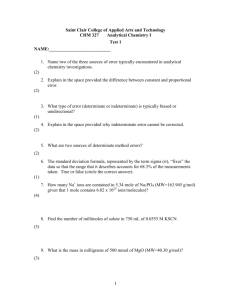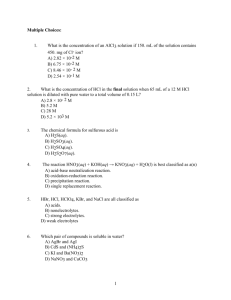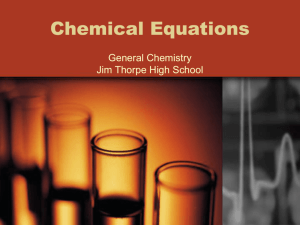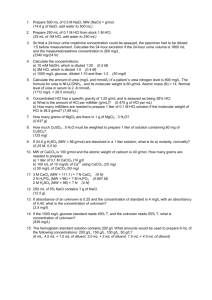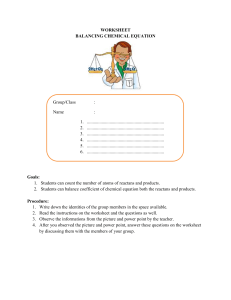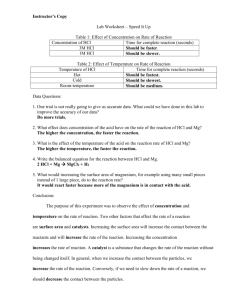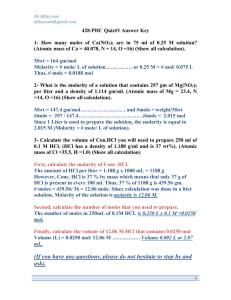Chem 120 Worksheet – Thermochemistry (6 points) 1. A 74.8 g
advertisement
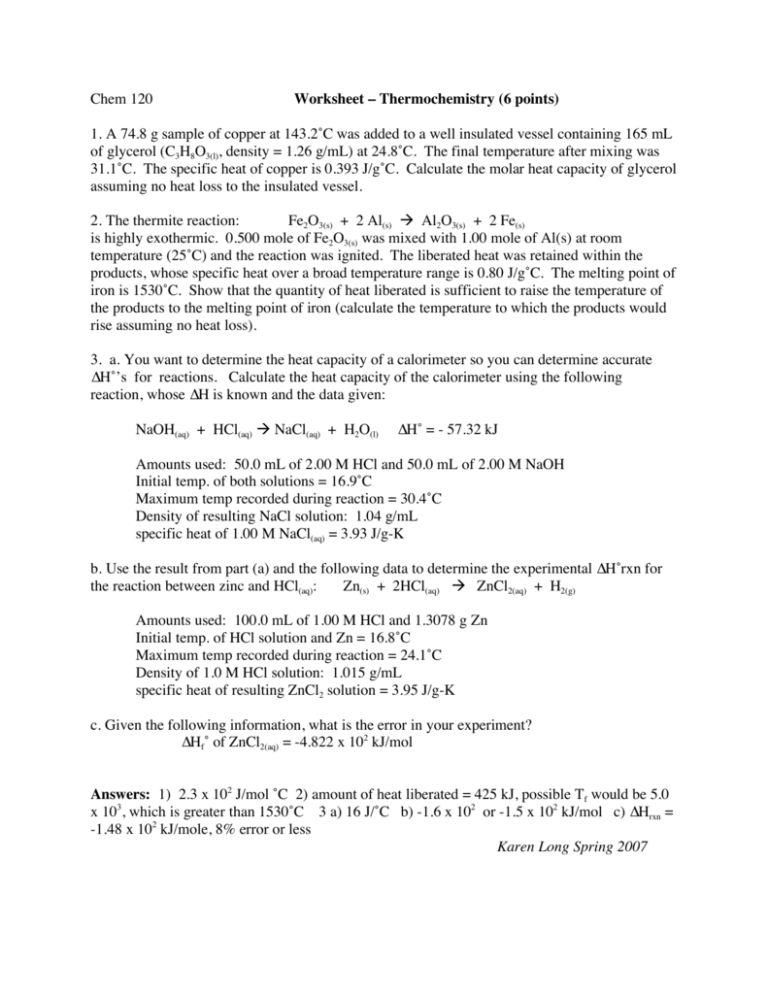
Chem 120 Worksheet – Thermochemistry (6 points) 1. A 74.8 g sample of copper at 143.2˚C was added to a well insulated vessel containing 165 mL of glycerol (C3H8O3(l), density = 1.26 g/mL) at 24.8˚C. The final temperature after mixing was 31.1˚C. The specific heat of copper is 0.393 J/g˚C. Calculate the molar heat capacity of glycerol assuming no heat loss to the insulated vessel. 2. The thermite reaction: Fe2O3(s) + 2 Al(s) Al2O3(s) + 2 Fe(s) is highly exothermic. 0.500 mole of Fe2O3(s) was mixed with 1.00 mole of Al(s) at room temperature (25˚C) and the reaction was ignited. The liberated heat was retained within the products, whose specific heat over a broad temperature range is 0.80 J/g˚C. The melting point of iron is 1530˚C. Show that the quantity of heat liberated is sufficient to raise the temperature of the products to the melting point of iron (calculate the temperature to which the products would rise assuming no heat loss). 3. a. You want to determine the heat capacity of a calorimeter so you can determine accurate ∆H˚’s for reactions. Calculate the heat capacity of the calorimeter using the following reaction, whose ∆H is known and the data given: NaOH(aq) + HCl(aq) NaCl(aq) + H2O(l) ∆H˚ = - 57.32 kJ Amounts used: 50.0 mL of 2.00 M HCl and 50.0 mL of 2.00 M NaOH Initial temp. of both solutions = 16.9˚C Maximum temp recorded during reaction = 30.4˚C Density of resulting NaCl solution: 1.04 g/mL specific heat of 1.00 M NaCl(aq) = 3.93 J/g-K b. Use the result from part (a) and the following data to determine the experimental ∆H˚rxn for the reaction between zinc and HCl(aq): Zn(s) + 2HCl(aq) ZnCl2(aq) + H2(g) Amounts used: 100.0 mL of 1.00 M HCl and 1.3078 g Zn Initial temp. of HCl solution and Zn = 16.8˚C Maximum temp recorded during reaction = 24.1˚C Density of 1.0 M HCl solution: 1.015 g/mL specific heat of resulting ZnCl2 solution = 3.95 J/g-K c. Given the following information, what is the error in your experiment? ∆Hf˚ of ZnCl2(aq) = -4.822 x 102 kJ/mol Answers: 1) 2.3 x 102 J/mol ˚C 2) amount of heat liberated = 425 kJ, possible Tf would be 5.0 x 103, which is greater than 1530˚C 3 a) 16 J/˚C b) -1.6 x 102 or -1.5 x 102 kJ/mol c) ∆Hrxn = -1.48 x 102 kJ/mole, 8% error or less Karen Long Spring 2007

